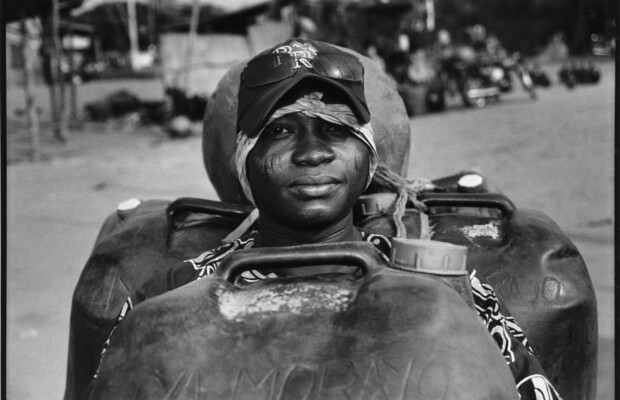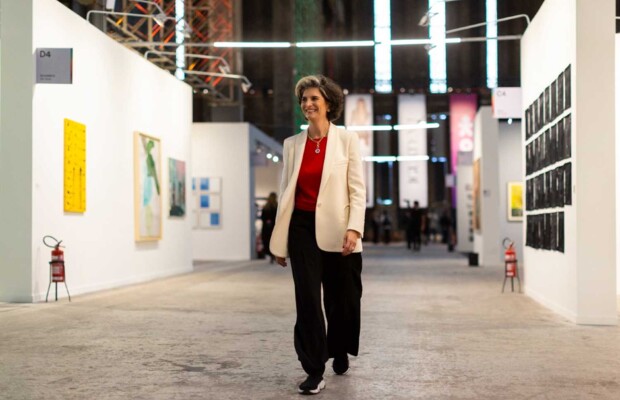An art fair with a soul
Conversation with Attila Ledényi - the founder and director of Art Market Budapest

About the beginnings. Art Market Budapest was founded in 2011, a time when the world was facing a significant financial crisis. What inspired you to take what could be called a bold step of establishing the fair during such troubling times?
We had two main reasons to do so. The first is our strong belief that those who can build and start something in times of a critical situation… once the crisis is over - are going to be able to come out of the crisis in a winning position. And the past 12 years have proved us right! The second reason: prior to establishing Art Market Budapest, we had already done a lot of work to bring the audience, contemporary art, and business closer to each other, and it was around that time that we felt ready to launch something new and something of an even larger scale.
Ever since the beginning, our priorities have been twofold: to bring new audiences to contemporary art and to create platforms where art and business can come together in a comfortable setting.
Prior to Art Market Budapest, we had established the Art Collectors Club, also a popular magazine on art collecting, and had created multiple successful campaigns and attractive art events, so we felt ready to take the next big step. As for myself, as a collector I had traveled to art fairs before, and I was convinced that an art fair is the best possible platform to achieve these goals we had set. This is why we took the bold step in 2011 - we just went for it.

And it seems you were not wrong. The year 2023 will be the 13th edition of Art Market Budapest, and it has been given the title of Central and Eastern Europe's leading international art fair. How do you perceive the growing art market in this region?
When we started in 2011, neither Budapest nor any other major city in Eastern Europe was on the international art map. We had to start by positioning Hungary and Budapest as a potential new international center for contemporary art. That was one of the first challenges we had to face. During this time, Budapest was on a developmental trajectory with a number of new galleries and a growing number of collectors and art buyers. We saw that there was potential in the market, however, we had to be realistic. One of the reasons why we definitely wanted to create an international platform is that the local market in itself was not attractive enough in the eyes of international exhibitors. The location of an art fair plays a very important role in its success. For us to be able to make the whole world believe that Budapest is well-positioned, we had to create a place that can serve as a highly attractive international meeting point. Thus, with an international art fair, you can't rely on the local market alone, but you have to work intensively with the regional market as well, and, if you're successful, in the longer run, you can also rely on an even broader international market. That was our plan. Trying to compete with such capitals of the art world as London, New York, Paris, Hong Kong wouldn’t have been realistic, and you have to set your goals with a clear mind.
International art fairs are almost like the world of tennis - you can only have so many Grand Slams, but once you're up on the level that is right behind the big brands, just close enough to them, then you can succeed in the long run.
What about the tradition of art collecting in this region? Given the history of Soviet influence; do you think the past of the region has influenced its capability to partake in the global art market directly?
Yes, because of the communist era, which lasted nearly 50 years, there was a significant gap in collecting and appreciating art, even access to the main international art centers was cut away. Hungary, along with many other countries in our region, had amazing traditions of art collecting going back to before World War II.
While Western collector societies continuously developed from the 1940s to the 1990s, these developments were halted in our region.
There's no denying that's a disadvantage.
We at Art Market Budapest tried to turn the situation around by positioning ourselves as an art fair that focuses on new and inspiring content because that's what we're good at. We live in a region that is still considered ‘emerging’. So, we have to focus on our strengths - bringing still-unknown artistic treasures to the surface and presenting them to the international audience. We actually experience that collectors, even institutional collectors, come here for treasure hunting. With this in mind, we have put a lot of effort into researching potential exhibitors, mostly from emerging regions, often training them how to succeed at an art fair.

How do you ensure that the event remains fresh and engaging for visitors?
Our fair is a place where visitors can find the stars of the future, and we work hard to maintain this attractiveness. We pay a lot of attention to research, particularly when it comes to researching potential exhibitors in still undiscovered territories. We take the time to visit these galleries and provide them with the necessary attention. For example, last year we chose Serbia as our Guest of Honor. We dug deep and found some amazing partners that resulted in one of the best shows ever. This approach helps us make sure that every time you come to Art Market Budapest there is something new and inspiring to discover.
Regarding Budapest as a city, over the past 12 years it has become an almost unbeatable location for tourists, including the sophisticated ones looking for quality and cultural content. Budapest is now viewed as one of the most inspiring cultural locations, so that definitely adds to our attraction: a big change compared to when we started.
Talking about the international part of exhibitors: what do you believe draws them to Budapest?
Well, obviously they come for the sales opportunity and setting their foot in the regional market, but they also come for more than just that. One thing that differentiates us from many other art fairs I'm aware of, is that we are a community builder, we pay much attention to treating our exhibitors as partners and friends, rather than just business clients, we honestly care for them. And this creates an atmosphere where you can gain much more from being present than just direct sales. To give you one example, it was during the Covid years when one of our returning Turkish exhibitors decided to temporarily move to Budapest months before we opened the fair to avoid uncertainties in shipping and travelling. And we did all we could to help him - even found a kindergarten for his baby boy. We also care about fostering connections among our exhibitors, which has generated dozens, if not hundreds of fruitful professional collaborations stretching through the whole world. If we spend a whole week together with hundreds of like-minded people, why shouldn’t we try and take advantage of it. It is important for us to build a strong community that extends outside the week of the fair. That, by the way, is one of the reasons why every year we organize an international art industry conference: the four-day-long INSIDE ART is now a successful and attractive meeting point for our community.

The community building you're mentioning reminds me of a conversation I read between you and Kamiar Maleki, who was at the time still the director of Volta Art Fairs. You were discussing the potential of an art fair alliance. Has there been any progress or development on this idea since then?
Ah, yes, this was Kamiar’s brilliant thought, five or six years ago, I believe he was at Contemporary Istanbul at that time, and he came to visit our fair and spoke at our conference.
His idea was essentially an art fair alliance based on mutual promotion and trust marketing, envisioning a map that would highlight cooperating partner art fairs.
This could still be useful, there are hundreds of art fairs every year, and it would be nice to give a compass to travelling collectors. Unfortunately, perhaps because Kamiar and we all have been preoccupied with too many other things in recent years, it never materialized, but it's still a beautiful idea. I certainly look forward to continuing our discussions with Kamiar.
And thinking about this year's program: is there a particular segment or feature that you're especially excited about?
In order to offer something fresh and interesting with every new edition, we introduce a focus program every year. Based on the selected topic, we don't just organize a show at the fair, but we create an entire festival around it.
With a number of satellite exhibitions, a conference, social and cultural events where the building of personal relations is also made easy. Providing space and giving particular attention to artistic sources that are relatively underrepresented while still have the power, the quality and the potential to bring new inspiration to the global art world is in the essence of Art Market Budapest. In previous years, we invited countries or sometimes regions or cities as guests of honor featuring such culturally and artistically exciting places as Serbia just last year; and Israel, Poland, the cities of Berlin or Cluj in Transylvania etc. in earlier years.
Our focus program in 2023 is dedicated to Roma contemporary art. I’m really proud that Art Market Budapest is the first international art fair in the world to dedicate a centrally located exhibition area – and a complex professional program – to contemporary Roma art.
We are placing this artistically and socially exciting topic in the center of attention, giving this community, so rich in cultural treasures, yet so underrepresented in the art world, a chance to succeed. It will be amazing!
In addition to that, there are a few other exciting and relevant issues we're addressing. One such topic is the sustainability of our culture, which is about the importance of the way we maintain and widen the audiences of our cultural treasures, and how we support creators and protect artistic values. Another topic concerns the crossover between real estate development and art, and talks about what we should do to increase the presence of public art in our built environment, a whole day’s program and a number of exhibited artworks will be dedicated to real estate developers and investors to discuss how art adds value to their investments.

What message or experience do you hope visitors take away from this year's edition of Art Market Budapest?
Ah, this is a good one. We work hard to create an experience of such complexity that can cater to many different audiences. For those who come with the hope of leaving professionally educated, we have the conference. For those collectors who just want to have a good time and enjoy the opportunity to comfortably purchase art, we have the VIP program including a wide range of services and social events, even a boat ride on the River Danube. We have a free art education program where hundreds of school kids are entertained every day. And for all visitors with any kind of background and motivation, we naturally have thousands of artworks presented by around a hundred friendly exhibitors arriving from nearly 30 countries. We really don’t like to leave anyone unentertained.
So I hope that those who come will want to return. There is something a visitor once told me, and it stuck with me: they love to always come back, because this art fair has a soul.
Share the post:














